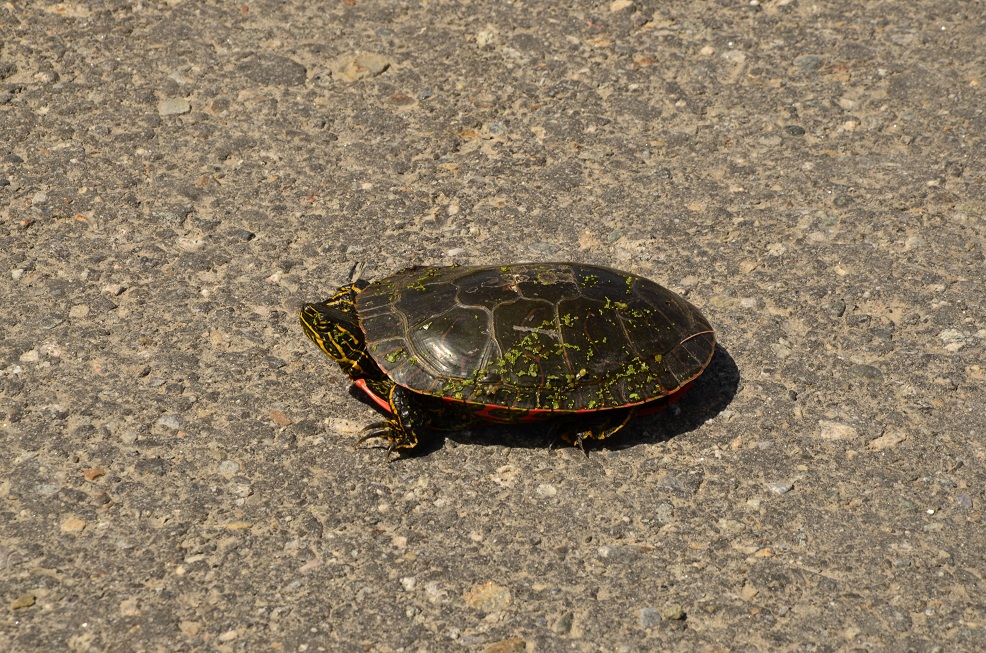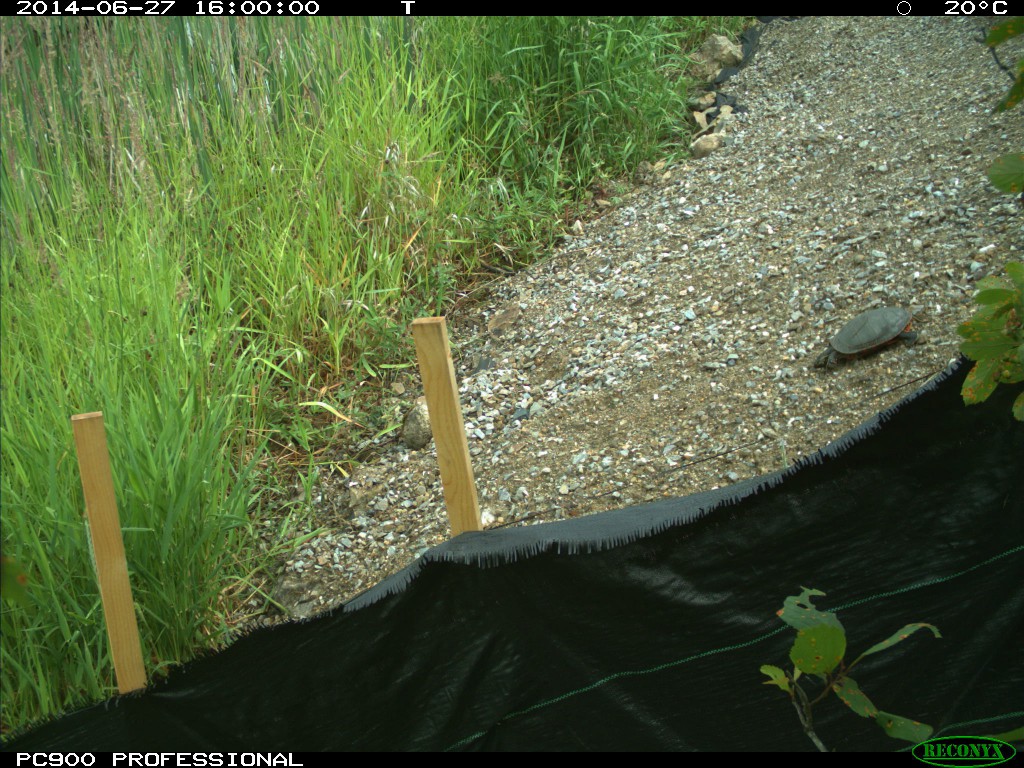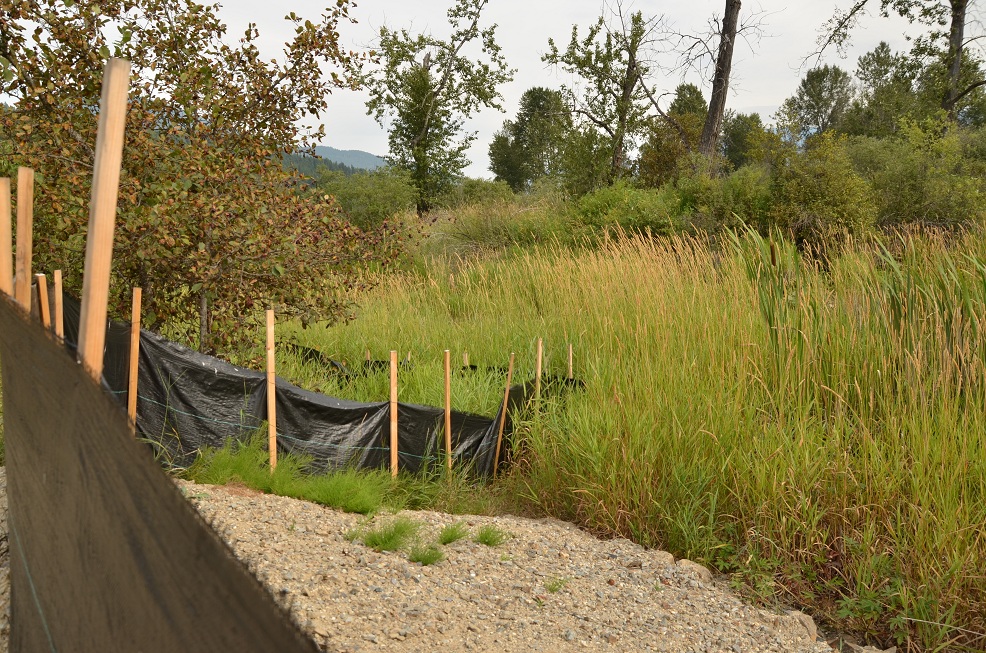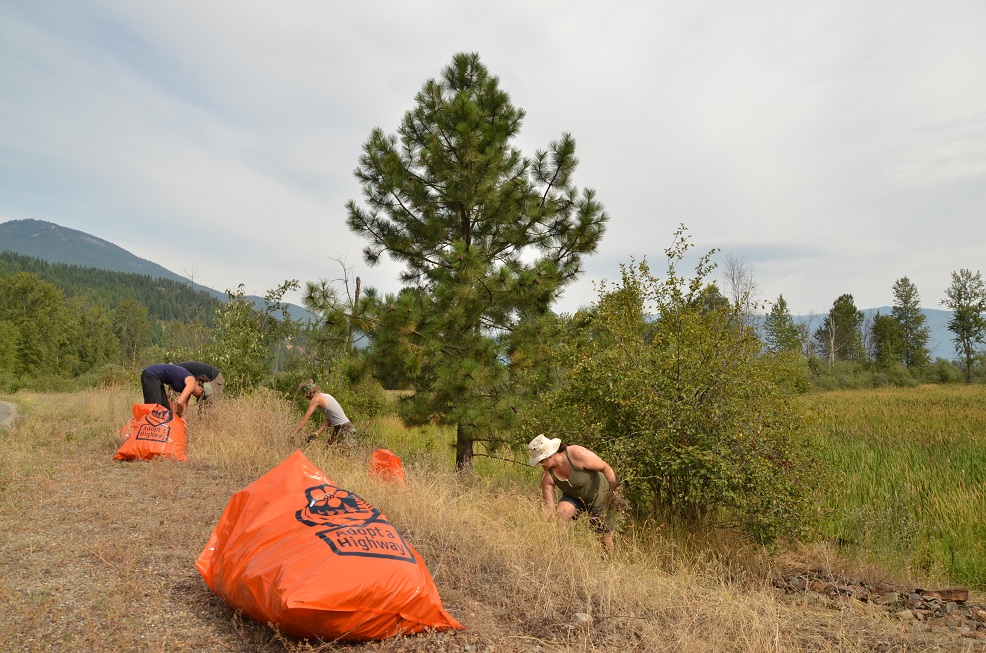
Turns out the saying about “location, location, location” holds true for turtles as well as humans. Gravel and sand with a sunny southern exposure… If you were selling real estate to Western Painted Turtles ready to lay eggs, this would be a hot property.
Unfortunately, when that perfectly warmed gravel and sand pile is a road shoulder alongside a well-travelled route like West Creston Road, this is a risky nesting spot due to road maintenance work like shoulder grading.
To protect Western Painted Turtles and their eggs from an untimely end, the ministry pitched in on a project to keep the creatures away from West Creston Road and heavy equipment. A Cranbrook biologist and two summer students built enhanced nesting areas, put fencing alongside them and studied the results, thanks to support from BC Hydro’s Fish and Wildlife Compensation Program, the Columbia Basin Trust and the Natural Sciences and Engineering Research Council.
Here’s four parts of the project to protect the turtles:
- The Ministry of Transportation and Infrastructure loaned some of our wildlife monitoring cameras to track turtle activity around the three nesting bays constructed about 10 metres from the road. The images from the cameras were examined for turtle traffic to the nesting areas.

2.Gravel, sand and landscaping fabric was supplied by our road maintenance contractor Yellowhead Road and Bridge (Kootenay). The fabric was placed below the gravel and sand nesting areas, to stop the growth of noxious weeds which can be harmful to turtle eggs.
3. Temporary fences encouraged the turtles to choose the enhanced nesting areas which are alongside the Creston Valley Wildlife Management Area.

4. Public education was an extra boost to keeping the nesting sites safe. The summer students spoke with locals at the Creston farmers market to educate them about the turtles. They also invited the public to participate in a work party to pull weeds in the area. (Pulling together for painted turtles, anyone?)

The Creston Valley’s Western Painted Turtles are part of the Intermountain-Rocky Mountain population which is on the provincial blue list, because their numbers are small and appear to be decreasing due to the extensive loss of wetlands where they live. The list is created by the Committee on the Status of Endangered Wildlife in Canada, experts that assess wildlife that is in danger of disappearing.
It looks like there has been some turtle nesting, at the gravel sites near West Creston Road this summer. The researcher hopes to continue the nest test study next year, and if it goes ahead, we look forward to supporting her and the work of others who expand our understanding of how wildlife uses highways and adjacent lands.
TranBC’s Top Turtle Tips and Facts
- Observe turtles from a distance, and don’t step into areas known for turtle nests.
- The population of Western Painted Turtles in BC is likely only a few thousand.
- Female Western Painted Turtles lay a single batch of eggs every second year
- Turtles lay 6 to 18 oval eggs, about 3 centimetres long, around June or July
- Around September, the hatchlings break free of their shells, though most stay in the nest until spring.
- Adult turtles can grow to up to 25 centimetres long – the diameter of a dinner plate.
Did you find this blog interesting? Learn more about how the ministry protects various specific of wildlife.
So wonderful that folks are out there trying to protect the Western Painted Turtle.. great job 💚💚
We agree 🙂 Thanks for your comments!